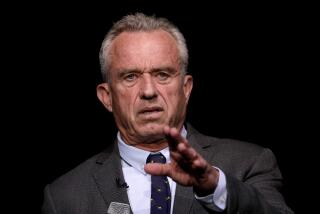A Frightful Disease Is Banished : Thanks to Drs. Salk and Sabin, polio is no longer a threat in the Western Hemisphere
- Share via
Only older Americans are now able to recall the chilling fear once raised in all families, especially those with younger children, by the viral infection that science knew as poliomyelitis and that lay persons commonly called infantile paralysis. In its severest form the virus attacked the nervous system, producing death or paralysis. Sometimes its victims were doomed to a permanent immobile existence encased within a life-support system known as the iron lung.
Its most famous victim, Franklin D. Roosevelt, who contracted the disease at the age of 39, proved that it was possible to overcome or at least compensate for some of polio’s worst consequences. Roosevelt’s determination and success--he was elected to the first of his four terms as President 11 years after being stricken with polio--gave hope to millions. But two remarkable American medical researchers gave more than hope. By developing vaccines to prevent polio, they provided the means to eradicate the disease and in so doing lift the terror that it inspired.
In 1954, Dr. Jonas Salk of the University of Pittsburgh found that polio viruses killed by formaldehyde were still able to produce immune reactions when injected into the body. From that discovery came the Salk vaccine. Five years later, Dr. Albert Sabin at the University of Cincinnati developed a live-virus vaccine for immunization against polio. Since 1961, this has been the vaccine of choice used throughout the world. Because of it, millions have been spared from infection.
The World Health Organization has now declared the Western Hemisphere to be free from polio, the last known case having occurred three years ago in a village in Peru. About 750 million people in the Americas can thus be considered as safe from one of history’s most feared diseases. Credit is given to a regionwide immunization campaign launched in 1985. The threat of polio elsewhere in the world, while vastly diminished, has not wholly disappeared. Public-health officials hope the aggressive campaign waged in the Western Hemisphere can be emulated so that the 120,000 cases that still occur annually in the world’s poorer regions can be eliminated.
Meanwhile, what has happened in the Americas must be hailed with the gratitude that such an accomplishment commands. The Charter of the United Nations speaks of saving future generations from the scourge of war. The achievement of Drs. Salk and Sabin was nothing less than to spare future generations from the scourge of a frightful disease.






